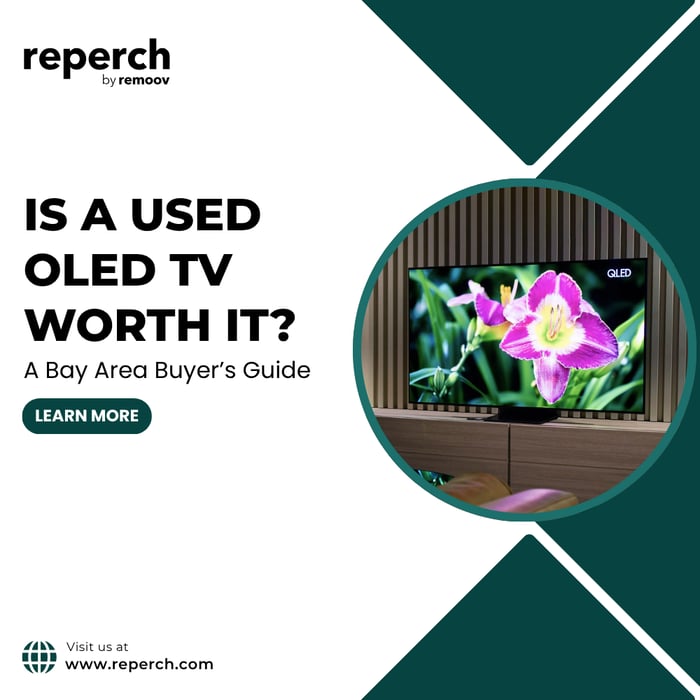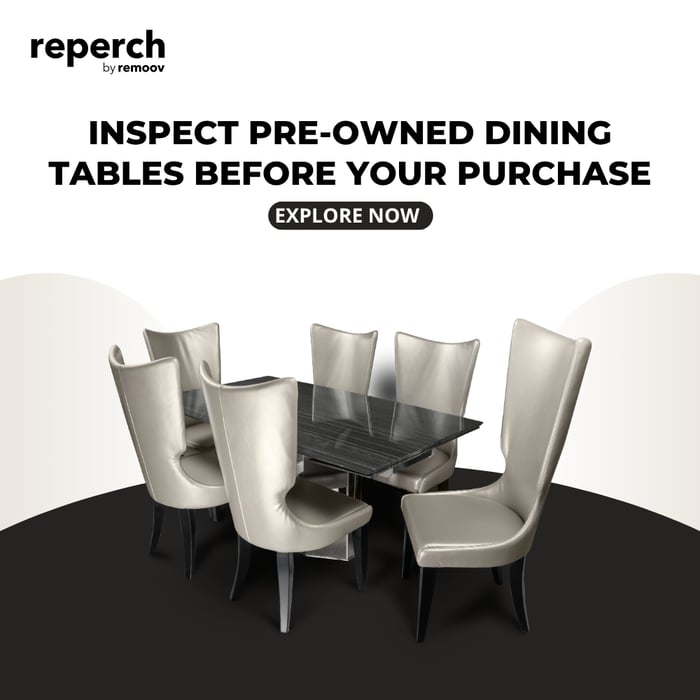OLED TVs offer some of the most stunning picture quality you can get rich blacks, vibrant color contrast, and sleek designs that make any room feel like a personal cinema. But buying one new can be expensive. That’s why more people across the Bay Area are asking: Is it smart to buy an OLED TV secondhand?
In a region known for sustainability, smart tech, and value-conscious consumers, secondhand electronics including OLED TVs can offer serious savings. But not every deal is a good one. OLED panels are delicate, and age, usage, or improper handling can lead to problems that aren't obvious at first glance.
This guide walks you through everything Bay Area buyers should know before purchasing a used OLED TV from what to inspect to where to shop, and how to avoid regrets.
What Makes OLED TVs Different?
Before diving into secondhand tips, it's important to understand what makes OLED TVs special and why they’re priced higher than other models.
OLED (Organic Light-Emitting Diode) TVs don’t use a backlight like traditional LED or LCD TVs. Instead, each pixel lights up independently, allowing for:
True blacks (since pixels can turn off completely)
Better contrast and sharper detail
Wider viewing angles with consistent color
Slimmer designs and sleek profiles
This advanced technology means OLEDs deliver better image quality, especially for movies, gaming, and high-end streaming. But it also means they can wear out or degrade in ways other TVs don’t.
Should You Buy a Used OLED TV?
In many cases, yes if you know what to look for.
OLED TVs are built with premium components, and brands like LG, Sony, and Panasonic engineer them to last. Still, buying used means you’re not covered by the original warranty and may face hidden damage if the seller didn’t take good care of the TV.
Here are the top factors to consider before making your decision.
1. Check for Burn-In and Image Retention
One of the biggest concerns with OLED panels is burn-in a permanent discoloration that happens when static images (like logos or HUDs in games) remain on screen for too long.
How to check for burn-in:
View the TV with a pure white or gray background
Look for ghost images, shadows, or discoloration
Pay attention to corners and edges where logos may have lingered
Burn-in can’t be fixed and will get worse over time. If you notice faint outlines or patches on the screen, it’s best to walk away.
Tip: Ask the seller what the TV was used for. TVs used heavily for gaming or news (with static ticker bars or logos) are more likely to suffer from image retention.
2. Test Picture Quality Across Modes
OLED TVs use advanced processing for different content types: movies, sports, games, and streaming. You’ll want to make sure the panel and processor still perform across all settings.
Check:
HDR and 4K performance (ask the seller to stream from Netflix or YouTube in UHD)
Motion smoothing and refresh rate for sports or fast action scenes
Deep blacks in a dark room there should be no glowing or light bleed
Flickering, banding, or lag could indicate internal issues with the processor or HDMI ports.
3. Inspect the Physical Condition
OLED TVs are fragile. Even a small crack or drop can affect performance.
Look for:
Scratches on the screen
Chips on corners or frame
Loose HDMI or power ports
Bent stand or unstable wall-mount setup
Ask how the TV was mounted or stored. A TV that was wall-mounted and rarely moved is less likely to have internal damage.
4. Understand the Age and Model Year
OLED technology evolves quickly. A five-year-old TV may not support current features like HDMI 2.1, eARC, or advanced gaming modes.
Questions to ask the seller:
What year was the TV purchased?
What’s the exact model number?
Is the original box, manual, or remote included?
You can look up the model online to see reviews, software compatibility, and feature sets. Newer OLED models offer better brightness, improved anti-burn-in software, and smart home compatibility.
5. Check for Software and Smart TV Compatibility
Most OLED TVs are Smart TVs, meaning they rely on software to run apps and streaming services. Outdated firmware or unsupported platforms can affect usability.
Before you buy:
Confirm that the TV supports current streaming apps (Netflix, Disney+, Prime)
Check that the software is up to date or still receiving updates
Ask if the seller performed regular firmware updates
Make sure the remote and on-screen menu are fully functional
A TV with a slow or buggy interface can make streaming frustrating.
6. Know the Risks (and Costs) of Repairs
While OLED TVs can be repaired, panel replacements are expensive and usually not worth it for older models. Out-of-warranty service can range from $200 to over $1000 depending on the brand and issue.
Common repairs include:
HDMI board replacement
Power supply repair
Software reset or firmware reflash
Remote or interface component repair
If you’re buying a used OLED, be sure you’re prepared to accept the condition as-is or budget for potential repairs.
7. Ask for a Live Demo
In-person inspection is ideal. If that’s not possible, request a video demo showing:
TV powering on from standby
Smart TV menu functioning
Streaming a 4K HDR video
Navigating apps using the remote
All HDMI ports working with an input
Avoid sellers who won’t provide a clear demonstration. You don’t want to discover flickering pixels or faulty audio after it’s already in your living room.
8. Buy From a Reputable Source
When it comes to secondhand electronics, trust is everything.
Better sources for used OLED TVs in the Bay Area:
Reperch: All listings are quality checked, and pickup/delivery is available
Local appliance and electronics resale stores
Certified refurbished outlets (for newer models)
Friends or neighbors with known use history
Avoid random listings on peer-to-peer marketplaces unless the seller is responsive and transparent.
9. Consider Warranty Transfers (If Available)
Some OLED TVs offer limited warranty transfers if purchased through an authorized dealer. It depends on the brand and whether the seller has proof of purchase.
Ask:
Is the original receipt available?
Was the TV registered with the manufacturer?
Is there any extended warranty from the retailer?
While not common, these protections can add peace of mind.
Why Buying Secondhand OLED Makes Sense in San Francisco
San Francisco buyers are no strangers to tech and many know the value of high-end gear. The local resale market often includes lightly used OLED TVs from people upgrading their setups or moving homes.
In a city focused on sustainability, value, and convenience, buying a used OLED TV from a trusted source like Reperch offers:
Big savings on premium models
Reduced e-waste and landfill contribution
Fast, local pickup and delivery options
Transparent listings with quality assurance
Final Thoughts
Buying a secondhand OLED TV can be a great move if you shop smart. While these TVs offer unbeatable visuals, they also come with specific risks when purchased used. From burn-in to missing ports, knowing what to look for can save you hundreds in repairs or replacements.
Take your time, ask the right questions, and inspect carefully. Whether you're building a movie room or upgrading your living room, secondhand OLED tech is a bright idea when done right.
Looking for a trusted place to start?
Reperch makes it easy to find quality secondhand TVs, furniture, and home electronics across the Bay Area. Every item is inspected, listed transparently, and available for local pickup or delivery.








